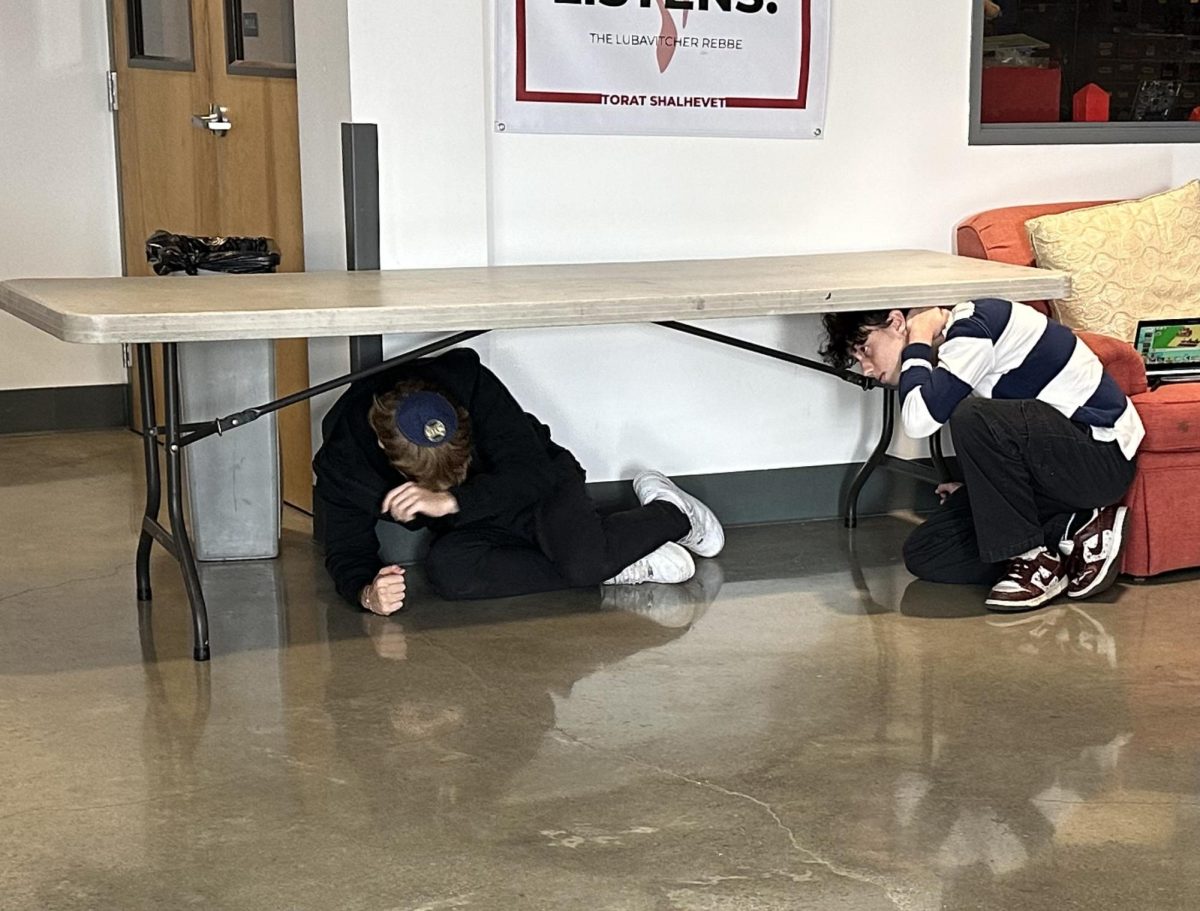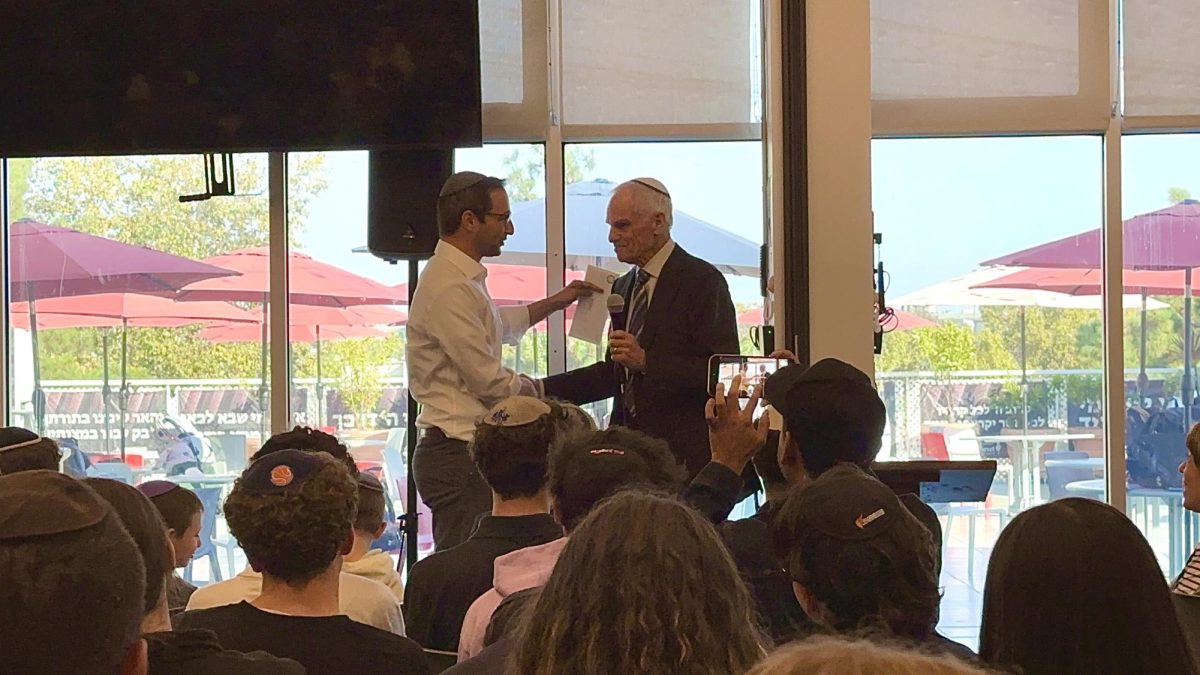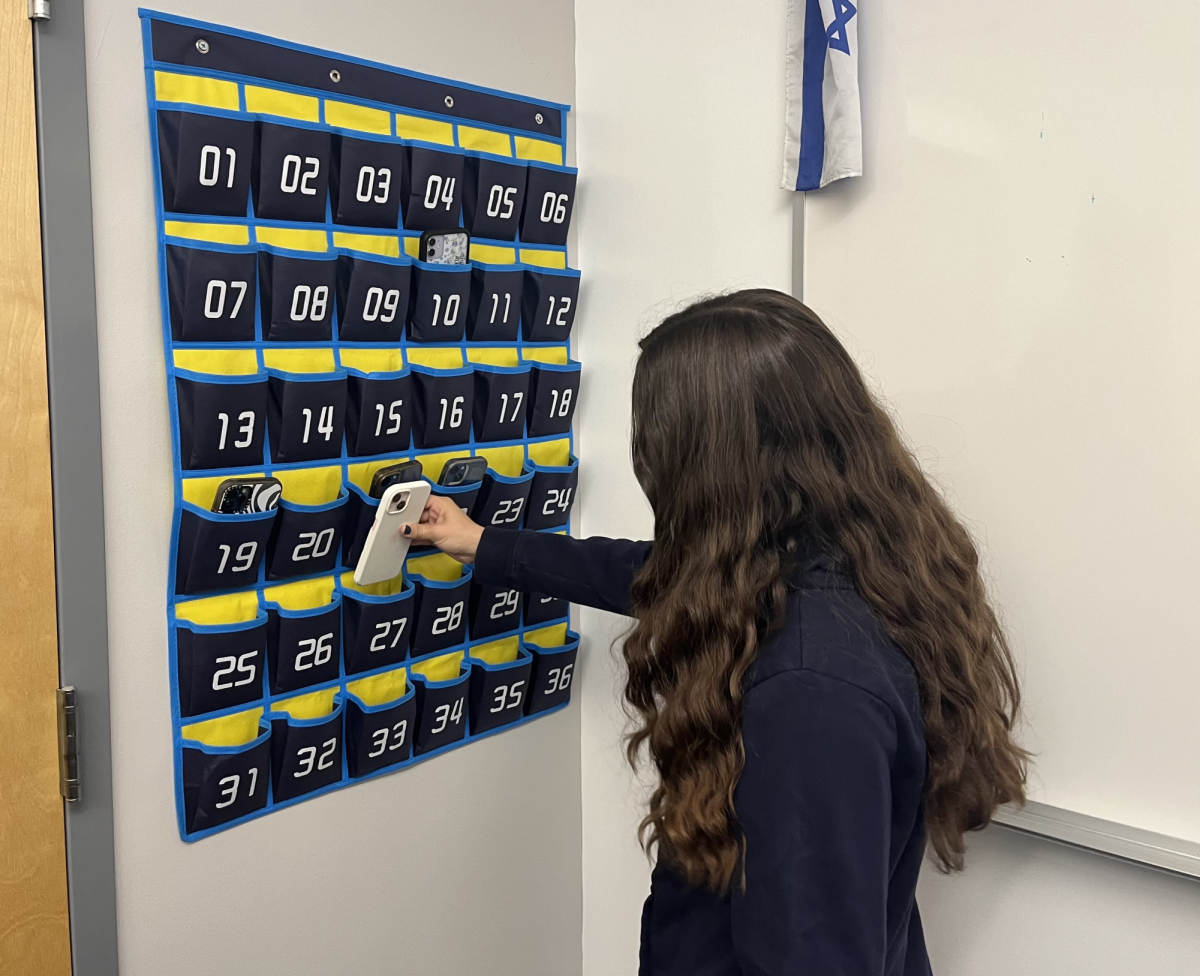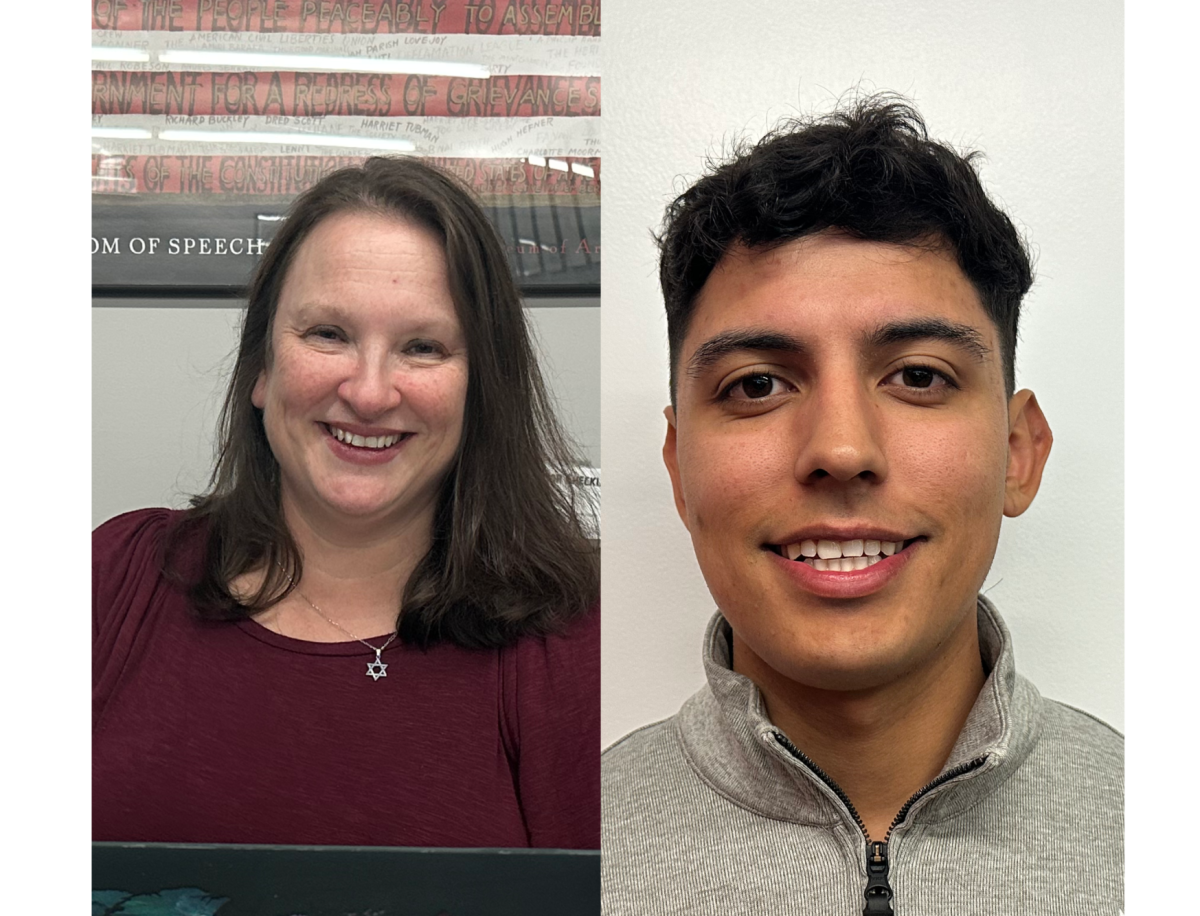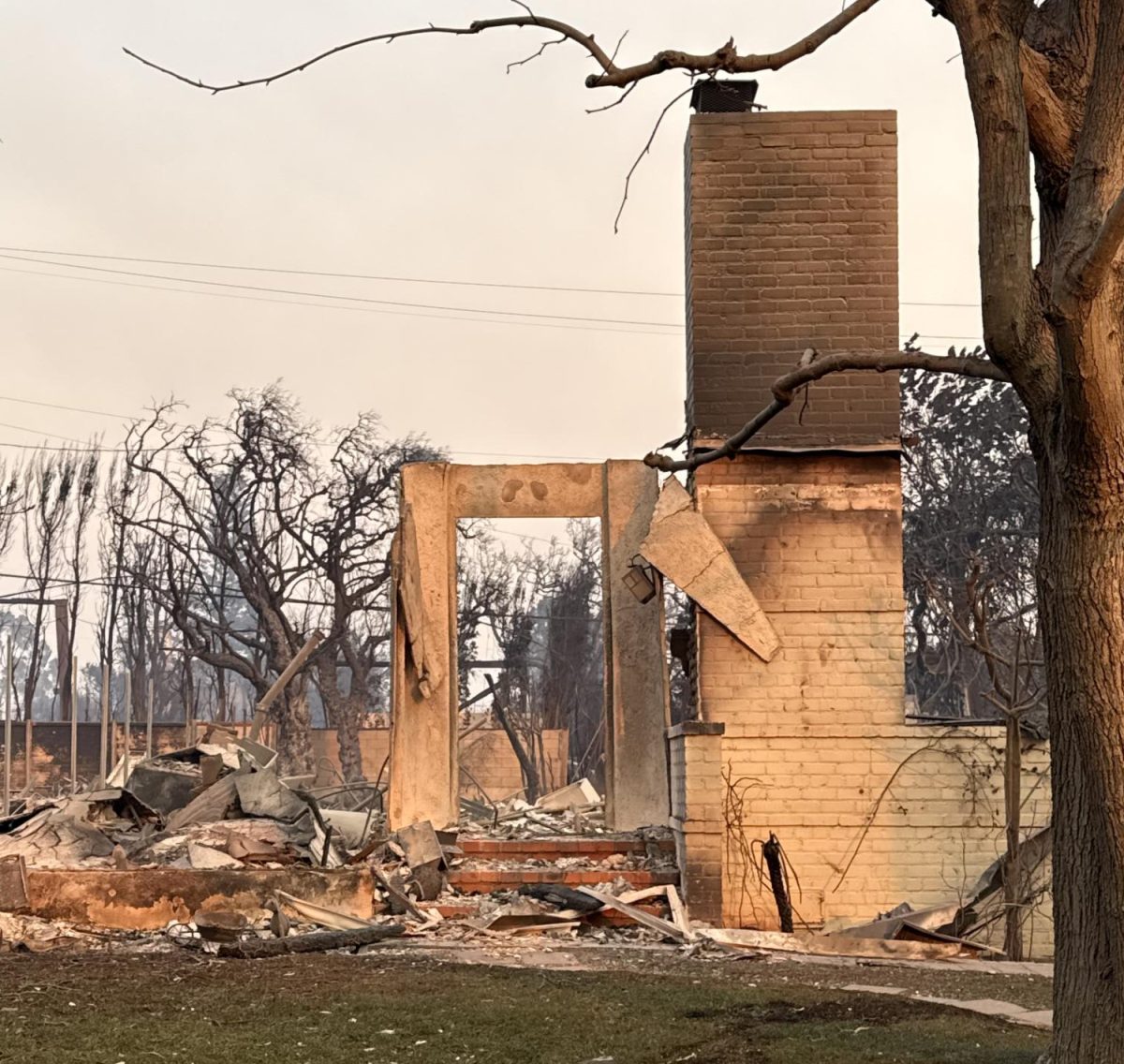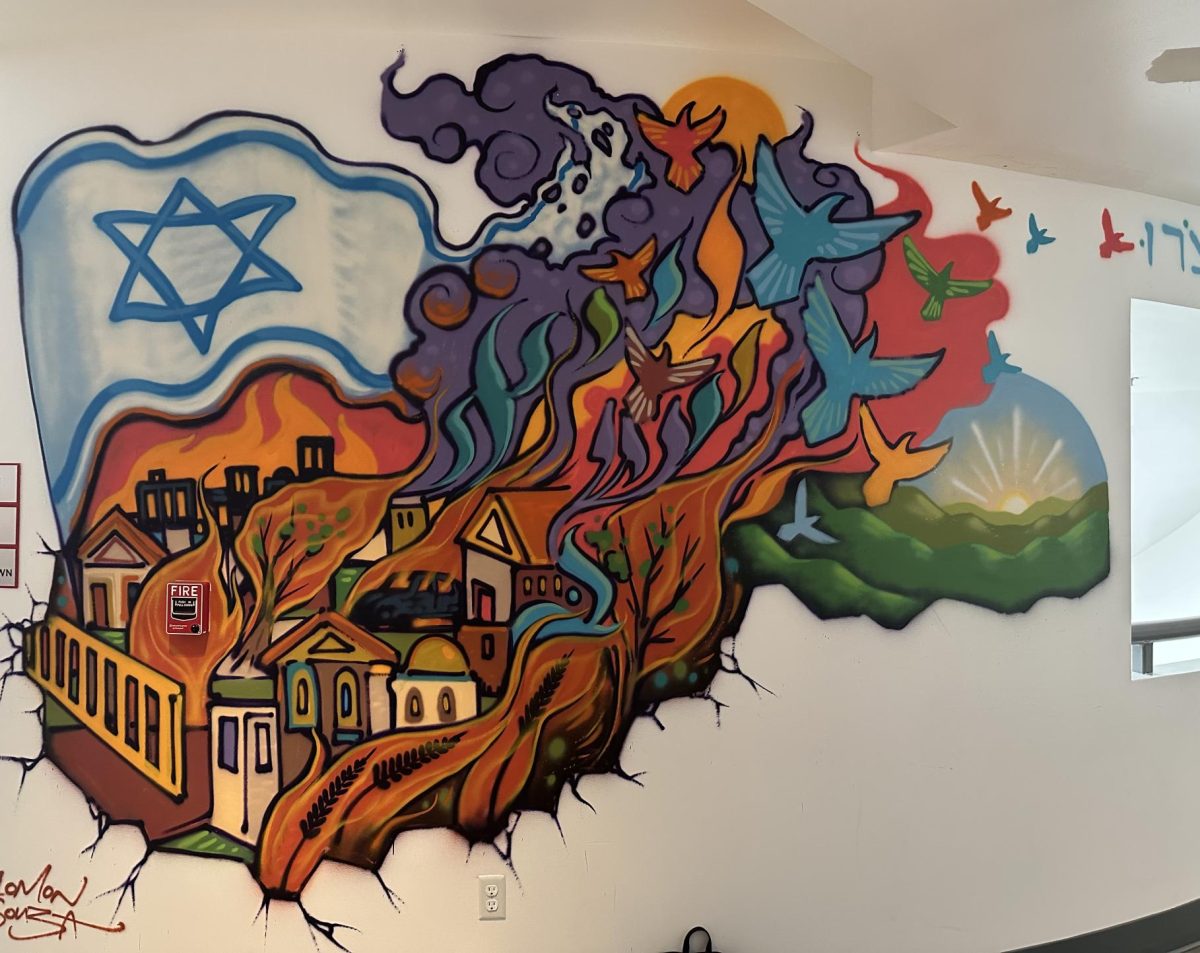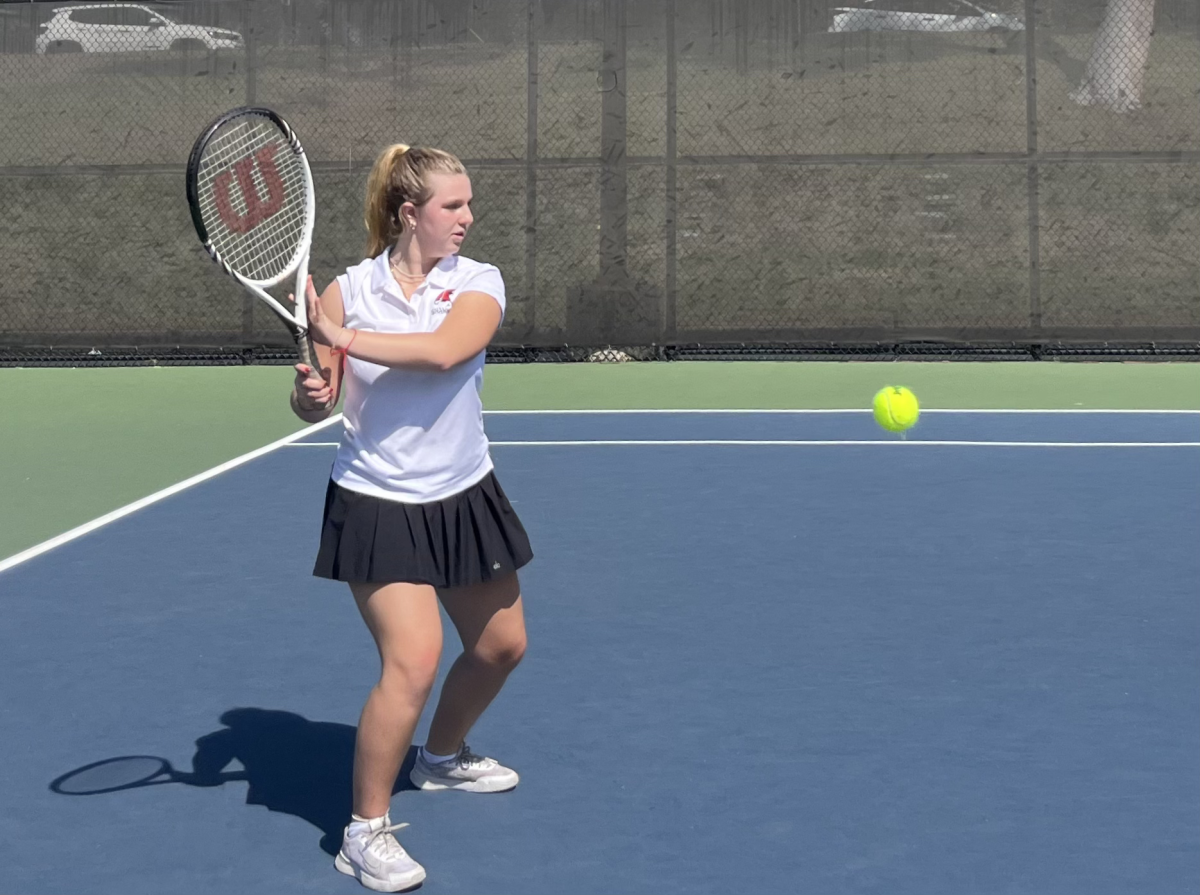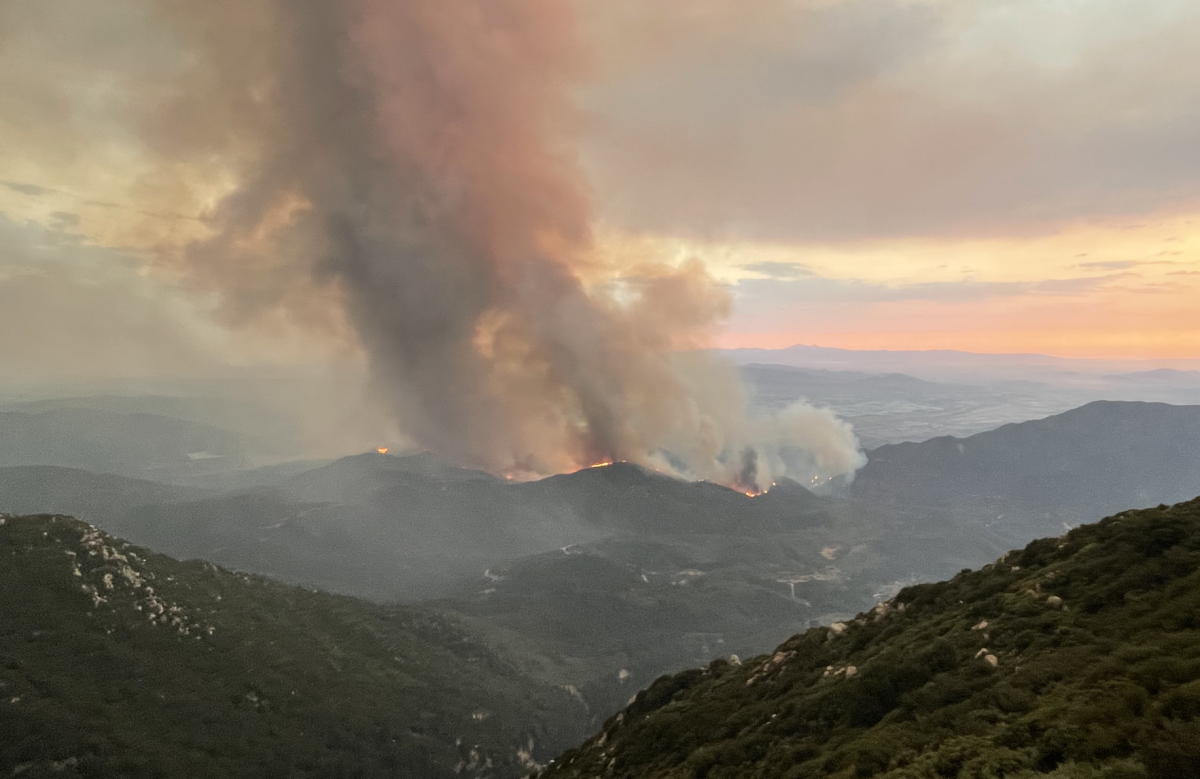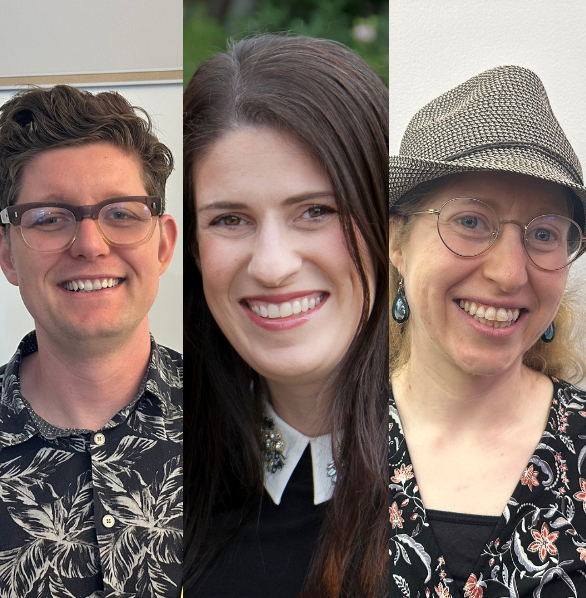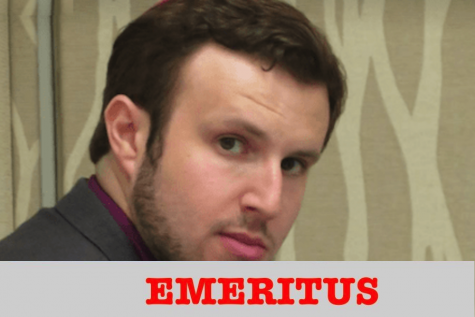Editor-in-Chief Zev Hurwitz is reporting from the senior Poland-Israel trip. Previous days’ posts are below.
The last time I rafted in the Jordan River, I saw several members of the Shalhevet community coincidentally. This time, there are Shalhevet kids in my boat and I realize I am seeing this place from a new perspective — one where I am among friends, and I put sunscreen on because I feel I need to as opposed to a certain parent telling me I need to.
This whole country is like a family to me, though I rarely see any of my family who actually lives here. I visited a shopkeeper who I saw 10 months ago when I was here for my brother’s bar mitzvah; this time I was a repeat customer in his store. There’s a high level of comfort I have here and I am desperately trying to avoid writing the cliché of “This is my home” — oh well.
I hate long flights and the worst flight I have ever taken was 10 hours to Germany nearly two weeks ago. This Sunday, I will be taking two flights from Israel and Germany, and the latter will bring me home to rejoin life as we know it. But with a newfound appreciation for life, I will embrace our “struggles” and our “hardships” with a new outlook.
This trip (though not over!) has been ultimately empowering and everything else the brochure said it would be, though my thoughts on what I have seen still need a little time to be processed. Meanwhile, life around me keeps on running. UCSD needs my housing form in by June 9. I still have a newspaper to run. But the opportunity to do these things is a blessing and for that, I am grateful.
This may or may not be my final post, internet permitting, but I appreciate those who have taken the time to see this one outlook on our trip. It is something I will never forget.
Shabbat Shalom
After visiting kibbutz Misgav Am, which overlooks the Lebanese border, we hiked down to the Banias waterfall, followed by lunch in Kiryat Shemonah. Our afternoon was spent in Tzfat (Sfat, Safed, Sefad, Zafed, Zefat …?) and then at an extended presentation in the Sofer Stam building.
I feel like after days and days of reminders of death and tragedy, we needed this break. I feel remotely cynical for saying it, but it’s gotten a bit repetitive. Keeping in mind that that’s what the trip is about – “darkness to light” and other clichés – it’s still a bit straining on me.
Maybe that’s why I burst into tears of laughter during a presentation at the Sofer building. One room consisted of a moving grandstand and 3-D glasses that showed a series of multimedia displays that taught (in, as one classmate said, “Birthright style”) the laws of Torah, mezuzah, and tefillin. The last video showed a bunch of 8- 10-year-old boys singing in the style of modern rappers and pop stars about all the mitzvot they do. I and other folks in my group had to dry our happy tears when “With all the Jews” finally ended.
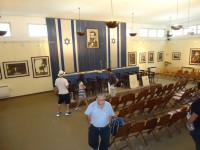
Israel is continuing to make me jealous by reminding me about how easy it is to be a religious Jew in a secular setting here. Gas stations carry kosher sushi (though I may not trust the quality) and there is a shul in every hotel. The culture is beautiful, the language is beautiful and the opportunities are beautiful.
I’ve noticed recently that I get goosebumps every time they play “Hatikvah” in this country. Perhaps it’s seeing where I came from last week that makes me feel more in touch with the song, but regardless of the reason, when we hit the last line “lihiyot am chofshi” to be a free nation, my arm hair stands up on end and chills run through my sides.
As a group, meanwhile, the realization is starting to hit us that we’re only here a few more days. We’re hoping we can make the most of it, while still sticking to our overall goals for this trip.
Day 9: The path of history
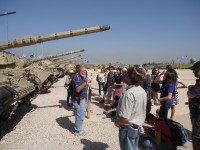
Day 8 – Small world
It’s becoming a running (yet sick) joke on our tour that Alan, our guide, loves cemeteries. The first place we visited after landing in Poland was a cemetery and we’ve been averaging pretty close to one per day. So no one was really surprised when we pulled into the Har Herzl cemetery on the outskirts of Jerusalem.
The graveyard, which mainly houses the remains of Jerusalem-native I.D.F members who were killed as soldiers in and out of combat, is only a kilometer or so from Yad Vashem, whose grounds we had toured earlier in the day.
As our luck would have it, today was a commemorative day in the graveyard for Naot Weissman, the most recent soldier to be buried there. Today marked the end of his 30-day initial mourning period and his childhood friend, David, was on call to tell us stories about his friend who died this past Pesach.

Two graves over was the resting place for a soldier who was killed in action. His birthdate? March 1992. Several of my classmates are ‘92ers and seeing a dead soldier from that year was a shock to our system. The Lodz rabbi died years ago and most graves we’ve seen on the trip predate us by decades. But a kid our age? We had to let that sink in.
A woman who is also doing a Poland-Israel trip gave us a brief biography of her teaching career. Mary Voonestol is a gentile teacher who insisted for 10 years that Holocaust education be instituted at St. Anne’s Catholic school in Laguna Niguel. Her current trip is a gift from students and other community members who appreciated her work. As a generally emotional person, she told us, she expected to break down crying at Auschwitz. But she didn’t, partly because of the commercialism. Small world.
We still haven’t established a complete routine with anything, although I didn’t lose or break anything today! I also didn’t get any piercings though I would worry if I was the parent of other members of my class.
I found out this morning the rest of the details of regarding relatives of mine who perished in Chelmno. My great-great-grandfather died in the Lodz ghetto and his wife and two of his four children were gassed in the trucks as I described last week. Looking back, I’m glad I didn’t know that they had been killed there because my reaction would not have been natural. It hurts that family was murdered there but I recognize that there were 6,000,000 others. Today I learned about the 20,000-plus military victims who died for the State of Israel.
Let me assure you that this trip not been purely death and dying. We swam at Ein Gedi and we’ve been having awesome breakfasts. Today, our group toured the Kotel Tunnels and goofed off on Ben Yehuda Street for hours.
Tomorrow we leave Jerusalem to go up north. Hopefully the Wifi will be as abundant as the hospitality and happiness we are expecting.
No promises.
Days 4- 7: A view across time, seen across space
We made it.
After a seemingly sleepless night at the Warsaw Rest Hotel, a quick morning tour of (you guessed it) a cemetery followed by a walk through what had been the Warsaw Ghetto led us to the airport in suburban Warsaw for our flight to….
Germany? Okay, false start. So we wait a little. And then a lot. And then it’s seven hours. Finally we arrive at gate C 13, which is a gate with its own security because it only services flights to Tel Aviv. We are all given a very “friendly” and personal pat-down, where we all belatedly fall in love with the U.S. Transportation Security Administration because at least our men and women in blue have never put their hands inside our pants. A “random” security check on my camera leaves the screen completely broken. Every bag is opened and cross examined. Goodbye toothpaste!
Around two hours earlier, as we reentered the terminal areas from passport control, we had gone through a separate security area. In contrast to the C13 guards, these agents were a riot. As half of our group waited in the metal detector area, the guards discovered that Ariella Benji’s water bottle was half full and said she would have to finish it or throw it away. Seeing the sizable amount remaining, a friend and I began chanting “Chug! Chug! Chug!” The group bursts into giggles, which preceded true bursts of laughter as the guard who oversaw the “pat-down” area walked over holding his stopwatch, looked at Ariella and said, “Okay go!” Later, someone’s spray deodorant was confiscated, and the X-ray machine man had these words of wisdom for the student who had violated the 100-millilitre rule: “No Axe, No women!”
By the time we return to Los Angeles next Sunday, we will have been in Germany three times, and for many of us, these fraternity-style guards will be the most memorable part of that country, if not second to the guards whose thorough checks were borderline violating.
Welcome to Israel! The Airbus A380 (still Lufthansa and still scary) lands at Tel Aviv’s Ben Gurion Airport at nearly 4 a.m. and our first stop is the Haas Promenade which overlooks the Old City of Jerusalem. Having been three times, for me it seemed merely like returning home after a vacation. But I can only imagine the feelings of our three classmates — Adam Genie, Nathaniel Kukurudz and Liza Niss — who had stepped onto Israeli ground that day for the first time.
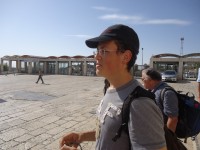
We did a Kotel walk and toured the East Jerusalem water tunnels and ate lunch in Machane Yehuda, the flea market which is as busy as ever on a Friday afternoon. The day ends with Shabbat services and dinner at the Masada guest house under the mountain which bears its name.
As you may have noticed, I haven’t posted in several days, and I do apologize. The internet situation here is grim. But after reading pieces of an Obama-related article on his ’67 borders speech in the Jerusalem Post, I can say I have not been held completely in the dark during this time.
Hours after his speech — and I will attest I do not know very much about the context or the reaction to the speech — we were in Israel, in areas that would not belong to Israel under 1967 borders. It didn’t take long for me to fall back in love with Israel and I love all of Israel equally. But knowing that the future of the pre-’67 borders is uncertain, I had a special appreciation for my visit to Jerusalem.
I couldn’t help reflecting on the trip from the airport that 48 hours ago, I had stood beside a mass grave that held hundreds of thousands of murdered Jews. At the time of this writing (I’m in our Wifi-less guest house at Masada early on Sunday morning because a roomate’s alarm went off prematurely) I don’t know full details, but apparently I may have relatives who were killed and dumped at Chelmno, the camp where I lost it. I regret now that I didn’t take my Poland trip more seriously and spent way too much time counting the seconds until Israel. My camera is no use to me in Israel, thanks to German peacekeepers, but the pictures I took in Poland will serve as an important testament to the atrocities committed there. I will reflect further on the relatives I may have lost at Chelmno once I discover more concrete facts.
Along with my toothpaste, my soap and shampoo were left accidentally in Warsaw. I would like to quickly point out to my parents and anyone else who cares about my hygiene that I have replacements of all three so rest assured, I am okay.
Israel has a promising week in store for us, but the part of this trip that will stay in my memory is Poland. And I’m still processing my reaction to what I saw in Poland and will probably never reach a complete closure on what I saw. I will have to do some soul searching deep inside myself to find my real feelings toward my tour-de-Poland. If I am unsuccessful with finding myself, I can always ask the Frankfurt C13 guards to help me out. They already know a little about what I have under the surface.
Day 3: With our own hands, burying the dead
Today was our busiest and most emotional day so far. After an overnight at the Grand (hardly) Hotel in Lodz, we had an unplanned city tour of anti-Semitic graffiti en route to the Jewish cemetery. Stars of David engulfed swastikas, particularly heavily in the blocks which used to host the Ghetto in Lodz. Our disdain toward the Polish people for this reason has escalated greatly over night. (The scariest moment for me yesterday was a five-story elevator ride with two bigger Polish men who stared at my kippah silently.)
Rabbi Simcha, the chief Rabbi of Lodz, invited our class to help make a minyan in a commemoration of the former chief Rabbi of Lodz’s yarzheit at his gravesite. Alan tells us that during the lifetime of the Rav, zt”l, 20,000 people might have showed up to a yarzheit for such a person. But now, they struggled to even make a minyan. One of the subtle but evident side-effects of the Holocaust.
After a brief stop at the Holocaust memorial in Lodz – a converted transport train station for the cattle cars that took members of the Lodz Ghetto directly to Birkenau — Alan announced that proper decorum would be in order as this was a sight that reflects terribleness. One student calls out from the back of the bus, “Everything here reflects terribleness!” While the statement seems to be in poor taste, ask anyone has been sleeping on the third floor of a Rest Hotel in Warsaw. It’s true.
The death camp at Chelmno is what finally broke me. If you read yesterday’s post, I hadn’t really gotten into the “Holocaust spirit,” mainly a result from overexposure to Auschwitz, etc.
What bothered me most initially about Chelmno, (besides the bus’s inevitable: “Are we going to a labor camp? cHELLm-no!”) was that I had never heard of it. A final resting place for 360,000 murdered Jews that had somehow slipped my Holocaust education and exposure.
As they did in other camps, the Nazis capitalized on prisoners’ hope, by telling them that Chelmno — Kulmhof in German — was a transportation hub from which they would be sent to other labor camps. After being stripped of their hair, clothes and belongings, the Chelmno victims were loaded into the backs of trucks, whose exhaust pipes led into the cargo/passenger areas. Within minutes, the Jews expecting a ride to a labor camp had all been killed by carbon monoxide.
The trucks then took the bodies to a field several kilometers away, where they were dumped into one of three mass graves and crematoria. Today, several private memorials line the area commemorating the deaths of those who were buried at Chelmno.
Sixty-odd years later, and the burials are still being carried out. One section of the field, which resembles an archeological dig (because it is), houses bone fragments left over from failed and rushed cremations. Shalhevet students collected bone pieces, including one from the skull of an infant, and a burial was held. It was then that the majority of the class broke down as we laid to rest, personally, pieces of the Jewish Holocaust victims, half a century later.
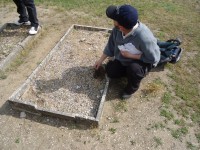
I personally broke down crying on the bus as we departed the Chelmno death camp, having just laid witness to the tangible Holocaust. Using my own hands to help bury victims, I saw the tragedy that until now had only been described to me in textbooks and lectures.
Auschwitz is a touring destination flooded with apathy and commercialism. Birkenau, while more substance-based, still lacked the realness needed to truly define the Shoah. They together showed where people were. Today in Chelmno, I saw where people are. A baby’s skull. A woman’s shoulder. Lying before me as testimony to the crimes of the Nazis.
I haven’t been utilizing the nighttime to sleep. I have been working on 8-hour days, sleeping for two or three hours on long bus rides in between hotels, cemeteries and gas chambers. For those of us who are awake on the bus, they have been screening films for locations that we are visiting. Our bus ride today from Chelmno to Warsaw was highlighted by a showing of Warsaw Ghetto Uprising. Yesterday, we watched Schindler’s List following a drive-by visit to the Righteous Among the Nations member’s factory on Monday night.
A rest stop around 20 kilometers from Chelmno had an adjacent park with a slide and swing set. The bus emptied so that we could use the restroom (free this time), but all 36 of us made our way to the playground. By now our tears had dried and we reached the portion of the trip where we became proud of our survival, and confident in the future of the Jews.
Most everything here reflects something terrible, but for us, the playground, with the backdrop of a sunlit sky and a wind farm, gave us hope and a sense of celebration of our existence and sustainment until this time. Tomorrow we will see the Warsaw Ghetto and then make our way to Israel (more Lufthansa bashing may be in store, following a seven-hour layover in my favorite German airport). While internet access may not be available to me in the near future, personal witness to the plight of modern Jewish history is headed our way.
Day 2: Auschwitz
No more Germans. Today’s focus is Poles.
The roads leading into Auschwitz, in the town of Oswiecim, are littered with these complex, fancy shopping centers. One can pick out the entrance to the Nazi death camp by the iconic Polish fast food chains that line the driveway to the camp visitors center and tourbus lot.
Roen Salem and I were among the first to observe the camp’s unofficial intolerance exhibit — a group of local Polish teenagers who upon seeing my kippah, began chanting “Nazis come back! Nazis come back!” at the entrance. Never again? The locals certainly seem to disagree.
And why should they? Auschwitz I, the labor camp portion of the 25-square mile campus highlighted by the infamous Arbeit Macht Frei (Labor makes one free) sign, is a tourist attraction. Past our local friends on the steps is a lobby area fitted with a snack bar, a gift shop, and a booth offering guided audio tours — along withs a pay-to-go toilet, complete with a cashier.
There are two ways to describe a visit to Auschwitz. One would be to say how I broke down crying and sank to my feet at the sight of the public gallows, and the other would be a page(s)-long lament on how I didn’t feel as upset as I might have liked to.
The latter is a more accurate representation of my feelings, but it wasn’t just me. A classmate told me as we toured the various camp buildings that she too felt desensitized from the emotions that a death camp should bring to Jewish teenagers. But again, the other folks in the area didn’t really help set a good precedent.

Wearing skirts and kippot, we walked through prison cells, barracks and courtyards with local Polish teenagers clad in Mini-skirts, tank tops, punk clothes and the works. Alan, our group’s trip-long tour guide told us at the entrance to Auschwitz that the camp was built for European prisoners. We saw dozens of European teens, seemingly imprisoned by their tour groups. They had the truest appreciation for leaving Auschwitz.
Our tour guide seemed almost bored as she hurried us through 90 minutes of barracks and memorable sights.
As a university bound senior, I can’t help but compare the tour to one of a college campus, where the living spaces, rec centers, mess halls and the like are displayed in a routine sort of way. The buildings were lovely, with nicely placed flowers and trees along pathways where prisoners were publicly murdered.
Not one, but two original labor camp buildings were converted for mid-tour book and snack bars. Disgusting. I almost bought a book just to throw at the cashier, capitalizing on our people’s suffering. It was then I realized that the most emotion I was feeling, was from the non-exhibited parts of the death camp.
Upon departure, I was privileged along with the rest of my class to avoid paying the fee to use the restroom, or as I aptly named it, the Zloty Potty.
Auschwitz II, or Birkenau, the death camp portion, has a more personal feel. No tour guides or scripted touring routes allowed for more reflection. But later, at a Mass-grave site where the family of Shalhevet benefactors, the Shappells lay to rest, a ceremony performed by Rabbi Sabo was interrupted by a motor cyclist, who was using the trails around the mass grave site for off-road training.
At a gas-station, as classmates loaded up on sodas and waters, I kept my debit card tucked away. I won’t spend a dime here (because they use zlotys, but I won’t spend those either) and the people of Poland, with the exception of our driver, Yanik, have given me no reason to support them.
Previous posts to this blog:
Day 1: Lufthansa
This trip is about perspective. I have to say though, as a privileged American who expects much from his airlines, this trip has gotten off to bizarre and slightly uncomfortable footing.
The last time I had a beer spilled on me, I was at a Dodger game. And like a visit to Dodger Stadium, flying Lufthansa is an experience in itself. I was fortunate enough to have an empty seat next to me but the man who shared my empty seat figured out a way to occupy more space than two people in two seats might have. A lady across the aisle managed to dump some German beer on my feet and the flight attendant pair who worked my side of the aircraft managed to guilt trip me (four times!) about not taking a meal immediately and opting to wait instead for the kosher meals, which were substantial albeit scalding hot to the touch.
“Kosher meal, please!” I said in my best German-friendly language.
“Oh ya!” the friendly German ladies replied. (I sighed and told them dankeschoen, thanks!)
When the flight finally ended, our class was divided between a stomach-sick Eli Willis (courtesy of the vegetarian dinner option), a passport-less Quinn Hastings (courtesy of “Ari, hold my passport”) and a 35-student train that followed a fearless Rabbi Sabo, who procured the assistance of a very friendly German who in turn led us to a “shortcut” to passport control in Frankfurt; this cut our wait time in half but quadrupled our walking distance. We passed through a security checkpoint where several students were detained and interrogated over a cell phone with batteries. As we left security, we turned back to see the jolly TSA equivalents using the handheld metal detectors on each other in sport.
The Willis-and-Hastings party did not make it to our next plane, which in addition to an hour delay, experienced a post-boarding change of venue. All joking aside, the plane, again Lufthansa, smelled of gasoline, which the pilot called “weird and abnormal.” Engine failure. The entire 40-seater was unloaded and moved to an adjacent plane via bus. The bus literally drove in a circle to park in the exact same spot where it had departed, so that we could board a plane that was 40-50 feet from our original aircraft. Finally we arrived in Katowice, an airport the size of Shalhevet, where we finally, albeit three hours late, embarked on our scheduled programming.
There were synagogues destroyed and restored, and a once-thriving Krakow Jewish community that has been greatly reduced because of anti-Semitism. And suddenly, my beer-stained running shoes didn’t seem like the end of days. We had had a tough day, but the previous tenants of the Jewish quarter in Krakow had had worse. Tomorrow we visit Auschwitz. And then the perspective of this trip will become entirely in focus, Lufthansa or not.


